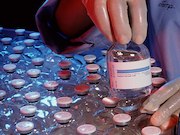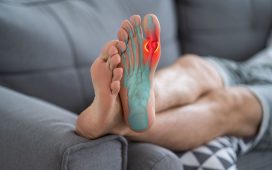Humoral response seen for 97.8 percent of HZ/su vaccine recipients versus 2 percent of placebo
MONDAY, May 21, 2018 (HealthDay News) — Recipients of the herpes zoster subunit vaccine (HZ/su), consisting of varicella-zoster virus glycoprotein E (gE) and AS01B Adjuvant System, develop robust immune responses, according to a study published in the June 1 issue of The Journal of Infectious Diseases.
Anthony L. Cunningham, M.D., from the University of Sydney, and colleagues presented immunogenicity results from two trials involving patients aged 50 years or older and aged 70 years or older who received two doses of HZ/su or placebo two months apart. In subcohorts with 3,293 and 466 participants for humoral and cell-mediated immunogenicity, respectively, serum anti-gE antibodies and CD4 T-cells expressing two or more of four activation markers assessed after stimulation with gE-peptides were measured.
The researchers identified a humoral response in 97.8 and 2 percent of HZ/su and placebo recipients, respectively, after vaccination. At one and 36 months post-dose 2, geometric mean anti-gE antibody concentrations increased 39.1- and 8.3-fold, respectively, over baseline in HZ/su recipients. In 93.3 and 0 percent of HZ/su and placebo recipients, respectively, there was a gE-specific CD42+ T-cell response. In HZ/su recipients, median CD42+ T-cell frequencies increased 24.6- and 7.9-fold over baseline at one and 36 months, respectively; in all age groups, the frequency remained ≥5.6-fold above baseline at 36 months. In all age groups there was an increase in the proportion of CD4 T-cells expressing all four activation markers over time.
“Most HZ/su recipients developed robust immune responses persisting for three years following vaccination,” the authors write.
Several authors disclosed financial ties to pharmaceutical companies, including GlaxoSmithKline Biologicals SA, which funded the study.
Copyright © 2018 HealthDay. All rights reserved.








